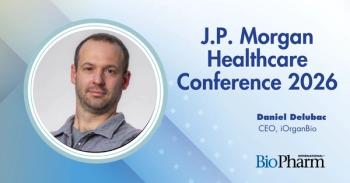
IMS: Global Spending on Medicines to Rise 30% by 2018
Approximately 40% of total global growth will come from specialty medications, according to a new report from the IMS Institute for Healthcare Informatics.
Global spending on medicines will skyrocket by as much as 30% over the next five years, increasing to $1.3 trillion in 2018, according to a new forecast from the IMS Institute for Healthcare Informatics. The higher levels of growth in drug spending will be due to the waning impact of patent expiries, increased access to medicine worldwide, and the introduction of new specialty medications.
IMS’s report, called the “Global Outlook for Medicines Through 2018,” predicts that absolute growth will spike at $70 billion this year, stunting the $40 billion increase from 2013, where spending was $989 billion. Between 2013—2018, total global spending for pharmaceuticals will expand at a compound annual growth rate of 4%—7% compared with 5.2% in 2013. Using constant exchange rates, absolute growth will be $305—335 billion, compared with $219 billion in 2013.
The level of global spending captured by the report does not factor in the rebates, discounts, taxes, and other adjustments that affect net sales by manufacturers. These discounts are expected to reduce growth by 25% of the total growth over the next five years, the authors of the report wrote.
Increased drug spending will also be due to the increased number of new molecular entities (NMEs) coming to market, with approximately 200 to be released over the next five years. Biologics make up 36% of the late-stage pipeline, according to the report.
Nearly half (40%) of the total increase in spending will be due to specialty therapies, noted the report, with a focus on immunotherapies, PD-1 and CDK inhibitors, anti-infectives, and antivirals. According to the report, one-fourth of those NMEs are expected to be oncology therapies, and cancer drug innovation alone will reach nearly $100 billion in 2018, up $35 billion from 2013. Many immunotherapies in the pipeline have FDA’s Breakthrough Therapy Designation, with the potential for various follow-on indications.
The changes in spending will be especially prevalent this year, when market growth is expected to reach 11.7% and in 2015. Growth will be driven in the US by fewer patent expiries, the launch of new medicines, and price increases, but is expected to level off in 2018, says IMS.
The developed markets—led by the United States, the major five European markets and Japan—are the primary drivers of this increased growth. North America continues to contribute the largest proportion to growth, although Asia will have the largest growth in global market share. Spending in 2018 will be highest in the US, followed closely by China (second) and Japan (third). China, which has the world’s second largest pharmaceutical market, will reach spending levels of $155-185 billion in 2018. Forty-six percent of growth in pharmerging markets is driven by China; this growth will be driven by generics and nonbranded products.
Interestingly, the report says spending in the top 5 European markets will be flat through 2018, as “healthcare budgets across much of the region remain under pressure from austerity measures.” France and Spain will see zero to negative growth; France will see increased generic utilization, and there were recently changes to the reference pricing system in Spain, according to the report.
France has also gained media attention for recently negotiating a low price for Gilead’s drug Sovaldi (sofosbuvir). The country’s deal with Gilead produced the lowest price for Sovaldi in Europe. These austerity measures for the hepatitis C blockbuster may be adopted by other areas in Europe interested in keeping costs down for high-priced products.
Although spending growth is predicted to be relatively stable, the highest growth will be in Germany and the UK, due to a “reduction in mandatory discounts in Germany and National Health Service budget easing in the UK.”
Newsletter
Stay at the forefront of biopharmaceutical innovation—subscribe to BioPharm International for expert insights on drug development, manufacturing, compliance, and more.




